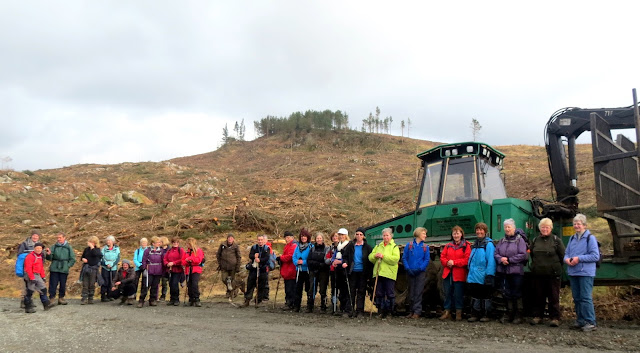Tuesday the 5th of March.
Today I'm accompanying the 'Ranger' on a visit to Alloway.
It's my first visit to the home of the bard. Some of his quotes appear in italics.
This place is right on the doorstep of 'Our blogging friend from Ayr'
Roughly 60 years ago I remember a postcard similar to the above.
We're using out National Trust cards to gain admission to
“O wad some power the giftie gie us To see oursel's as ithers see us! It wad frae monie a blunder free us. And foolish notion; What airs in dress and gait wad lea'e us, And ev'n devotion!”
As on the outside wall, much of the museum's presentations are in the Scot's dialect.
Being a Scotsman I'm supposed to know these words, but in many cases I'm glad of the glossary of English alongside.
Upon entering we're given brochures and tickets which also include entry to Burns Cottage which we'll also be visiting
“A prince can mak a belted knight, A marquis, duke, and a' that; But an honest man's aboon his might: Guid faith, he maunna fa' that.”
We're told that we'll have a short time looking around in the quiet............before the school classes arrive.
“I'll be merry and free, I'll be sad for nae-body; If nae-body cares for me, I'll care for nae-body.”
Many of the presentations and exhibits are interactive.
The mans own hand !
It was about now we heard the rising sound of youth...........the school classes had arrived.
“What's a' your jargon o' your schools, Your Latin names for horns and stools; If honest nature made you fools.”
There's quite a section on his family tree. He fathered twelve children.
He has over 600 living descendants as of last year, 2012.
"The best laid schemes o' mice an' men - gang aft agley."
Outside the museum our fellow rambler Gordon, still recovering from a Broken Tib and Fib comes by on his bike to say hello.
In the above collage there's a runaround, a beastie, a flighty thing, a local legend and a bird !
Sort it oot yersels.
On the way to Burn's Cottage
'Tam o' Shanter's' well represented along here
The Cottage
“O Scotia! my dear, my native soil! For whom my warmest wish to heaven is sent; Long may thy hardy sons of rustic toil Be blest with health, and peace, and sweet content.”
The picture above is a snapshot of an audio-visual presentation telling Burns life story. There are screens depicting each of the rooms in the cottage, and they're positioned about knee level so you are actually getting a bird's eye view. Impressive !
“To make a happy fireside clime To weans and wife, That's the true pathos and sublime Of human life.”
This was quite eerie. I guess they were all born in the same bed.
After the visit to the cottage we went back to the museum for lunch. Very busy for early March. The food a bit pricey, but you'd expect it here. Very good menu.
“Some hae meat, and canna eat, And some wad eat that want it; But we hae meat, and we can eat, And sae the Lord be thankit.”
The Auld Kirk
This is the rear of his father's headstone
'Epitaph on my Ever Honoured Father'
“Man's inhumanity to man Makes countless thousands mourn!”
Burns Monument and Memorial Gardens
The Burns Monument and Memorial Gardens stand on a sloping site on the north bank of the River Doon overlooking the Brig o' Doon.
“Contented wi' little, and cantie wi' mair.”
The Statue House.
Life-sized statues of Tam o' Shanter, Souter Johnie and Nanse Tinnock, proprietress of the alehouse they frequented in Mauchline. The statues were carved in 1830 by James Thom.
“Be Briton still to Britain true, Among oursel's united; For never but by British hands Maun British wrangs be righted.”
Brig o' Doon
I mentioned postcards at the beginning. We got another one from an aunt visiting Alloway in the early 50's similar to the one below. I said at the time I'd like to walk over that bridge some day.
"Ye banks and braes o' bonnie Doon
How can ye bloom sae fresh and fair?
How can ye chaunt, ye little birds,
And I sae weary, fu' o' care."
“The snowdrop and primrose our woodlands adorn, And violets bathe in the wet o' the morn.”
“The landlord's laugh was ready chorus.”
Doonbrae House Grounds
Views from the disused railway line.
The Museum Gardens
“And let us mind, faint heart ne'er wan A lady fair. Wha does the utmost that he can Will whyles do mair.”
“Should auld acquaintance be forgot, And never brought to mind? Should auld acquaintance be forgot, And days o' lang syne?”
What a fabulous day out.

 Custom Search
Custom Search






























































